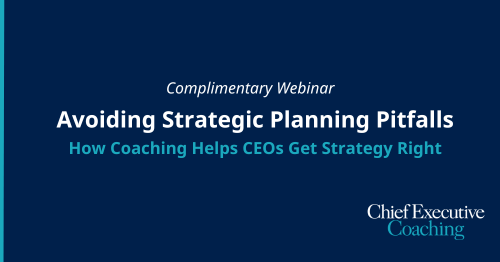
According to MIT’s Center for Digital Business, those companies that have digitally transformed themselves are 26% more profitable than their average industry competitors. These organizations have two things in common: they invested well in both technology-enabled initiatives and the leadership capabilities required for that profound change.
Organizationally, the most successful digital transformations follow a five-category framework that revamps an entire company to capitalize on the advantages of working with real-time information. But a company can’t hit its full digital stride until its senior management embraces the transformation on a personal level. At the most-transformed companies, executives personally invested in building their own digital understanding, so that change from the C-suite supported the evolution of the whole business.
The emphasis on leadership in digital transformation is significant. Yesterday’s CEO discussed results generated after the end of the month, analyzing what went right and wrong with the executive team. A CEO at the head of today’s most digitally transformed companies operates with real-time comprehensive information and instant global communications, understands what is happening as it occurs, and acts accordingly. This transition is not easy, and current CEOs approach it with varying degrees of speed and success.
So, how can CEOs who want to build their digital leadership capabilities get started? Here are 5 ideas that most CEOs can easily deploy.
1. Come clean. Most well-educated, high-powered business leaders aren’t very good at admitting what they don’t know. They’re used to being right and when they’re outside their comfort zone, defense mechanisms kick in. According to Chris Argyris, professor emeritus at Harvard Business School, “Their ability to learn shuts down precisely at the moment when they need it most.”
A much better strategy is to come clean. Digitization is new to everyone. Not knowing is expected and admitting it is the only way to learn. Ask, “What’s the difference between social networking and social media” or “What is the Internet of Things?” Not only will you learn faster, but research suggests that your humility will increase employee engagement and firm performance.
2. Get help. Many CEOs are experienced mentors. It may have been some time, however, since they served as mentee. Yet reverse mentoring, a process in which senior leaders are paired with younger, tech-savvy employees, is a great way for CEOs to learn about new, digital technologies. Reverse mentoring was first introduced by Jack Welch at GE when he insisted his 500 top-level executives reach out to junior employees to learn how to use the Internet. Since then, reverse mentoring has been applied by a host of companies, including Ogilvy & Mather, Hewlett Packard, and Cisco Systems, Beth Stackpole told ComputerWorld.
Alternatively, consider a digital coach. Coaches can be an external consultant, your CIO, or even a board member. In fact, IT strategy expertise is increasingly being used as a criterion for board selection. Some companies have even appointed “Digital Directors.” These board members make digital issues accessible to other members; advise on acquisition targets or important hires, facilitate introductions to leading-edge digital companies; and act as a sounding board for the executive team.
3. Go on a ‘learning journey’. In a digital learning journey, executives leave their familiar world and travel to new environments (e.g. customers, suppliers, research centers, peer companies, etc.) to get an outside perspective on digital transformation. By immersing themselves in new and different environments, they break down their existing mental models and gain access to fresh ideas.
4. Embrace social media. While CEOs’ use of social media has doubled since 2010, the majority of executives still use social media less than one hour per week, and very often, it is their PR team who is running social media under the CEO’s name. This is in stark contrast to consumers, 74% of whom rely on social media to influence their purchasing decisions and 80% of whom want to connect with their favorite brands on Facebook.
There are, of course, a few CEOs leading the social media charge. Netflix CEO Reed Hastings caused company shares to jump 6% when he posted on Facebook that Netflix’s monthly online viewing had exceeded 1 billion hours. Lufthansa CEO Carsten Spohr, recognizing the emotional impact of video, used YouTube to express his sorrow over the crash of flight 9525. Moreover, executives appreciate their CEO’s social media efforts: 52% say it makes them feel inspired and 46% say it makes them feel technologically advanced.
Use of social media is more than a way for CEOs to connect with investors, customers or employees. It’s also a way to familiarize oneself with disruptive and game-changing technology, gain confidence, and ultimately make better overall business decisions. If you haven’t already, set up a social network account, interact on the company’s website, or launch and post consistently to an external blog.
5. Fully commit. Digital transformation is a priority across all industries. As a result, demand for digital talent has skyrocketed. Over 30% of executives say their companies lack the digital skills needed, according to the Society for Human Resource Management. One of the best ways for a CEO to compete in this environment is to commit to digital transformation. Talent is drawn to commitment more than to lip service. The best talent wants to work for CEOs who are serious about transformation.
Still, expect to expend considerable resources at the start. The good news is that high-quality talent draws more of the same. Pay the first person what they want and they’ll bring in the rest. Moreover, CEOs’ commitment must extend to dedicating the team. In the words of Stephen Hoover, CEO of Xerox PARC, “Disrupting yourself is not a part time job.” If you want to make a change, you need a team. It can be small, even one person, but it must be dedicated.
When executive commitment to digital understanding is backed up by personal practices and actions, organizational change moves faster and more easily. When employees are being asked to adjust longstanding habits and processes, they’ll be more successful if they have a clear, constructive view of digital leadership by example.
The digital revolution is upon us and it requires leadership. Every CEO has a responsibility to build their digital leadership capabilities. In the words of John F. Kennedy, “Leadership and learning are indispensable to each other.”
The opinions expressed are those of the author and do not necessarily reflect the views of AlixPartners, LLP, its affiliates, or any of its or their respective professionals or clients.




Chief Executive Group exists to improve the performance of U.S. CEOs, senior executives and public-company directors, helping you grow your companies, build your communities and strengthen society. Learn more at chiefexecutivegroup.com.
0

1:00 - 5:00 pm
Over 70% of Executives Surveyed Agree: Many Strategic Planning Efforts Lack Systematic Approach Tips for Enhancing Your Strategic Planning Process
Executives expressed frustration with their current strategic planning process. Issues include:
Steve Rutan and Denise Harrison have put together an afternoon workshop that will provide the tools you need to address these concerns. They have worked with hundreds of executives to develop a systematic approach that will enable your team to make better decisions during strategic planning. Steve and Denise will walk you through exercises for prioritizing your lists and steps that will reset and reinvigorate your process. This will be a hands-on workshop that will enable you to think about your business as you use the tools that are being presented. If you are ready for a Strategic Planning tune-up, select this workshop in your registration form. The additional fee of $695 will be added to your total.

2:00 - 5:00 pm
Female leaders face the same issues all leaders do, but they often face additional challenges too. In this peer session, we will facilitate a discussion of best practices and how to overcome common barriers to help women leaders be more effective within and outside their organizations.
Limited space available.

10:30 - 5:00 pm
General’s Retreat at Hermitage Golf Course
Sponsored by UBS
General’s Retreat, built in 1986 with architect Gary Roger Baird, has been voted the “Best Golf Course in Nashville” and is a “must play” when visiting the Nashville, Tennessee area. With the beautiful setting along the Cumberland River, golfers of all capabilities will thoroughly enjoy the golf, scenery and hospitality.
The golf outing fee includes transportation to and from the hotel, greens/cart fees, use of practice facilities, and boxed lunch. The bus will leave the hotel at 10:30 am for a noon shotgun start and return to the hotel after the cocktail reception following the completion of the round.